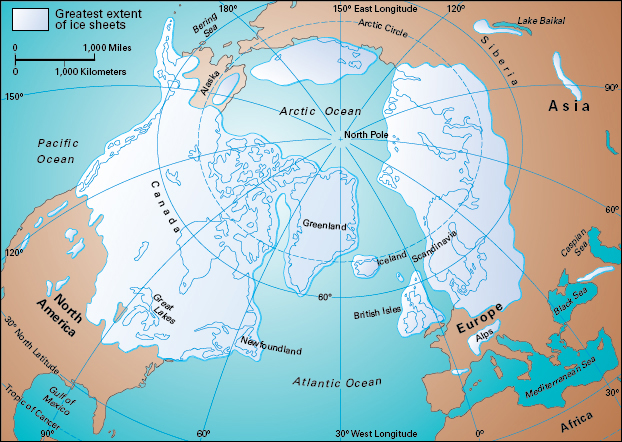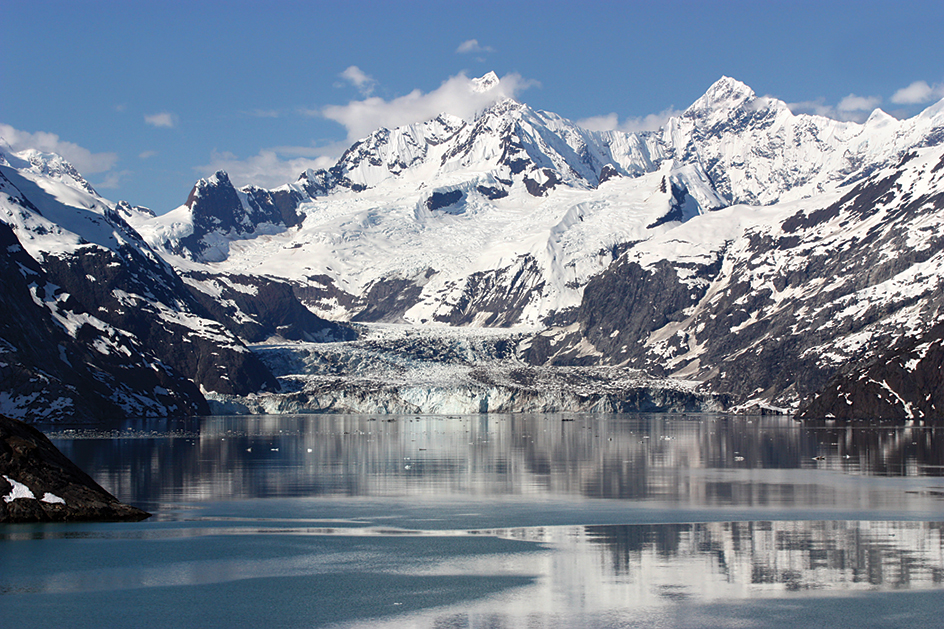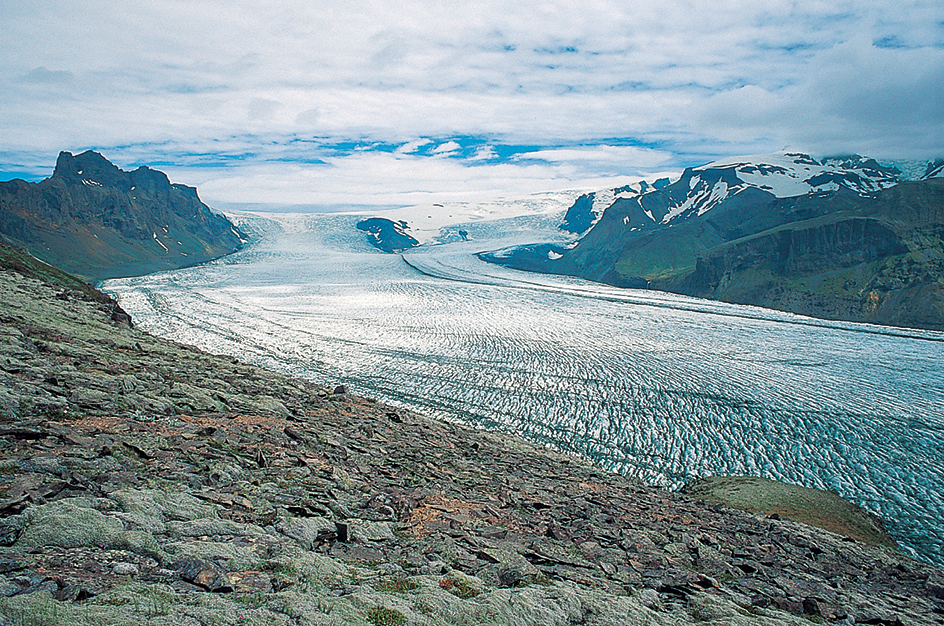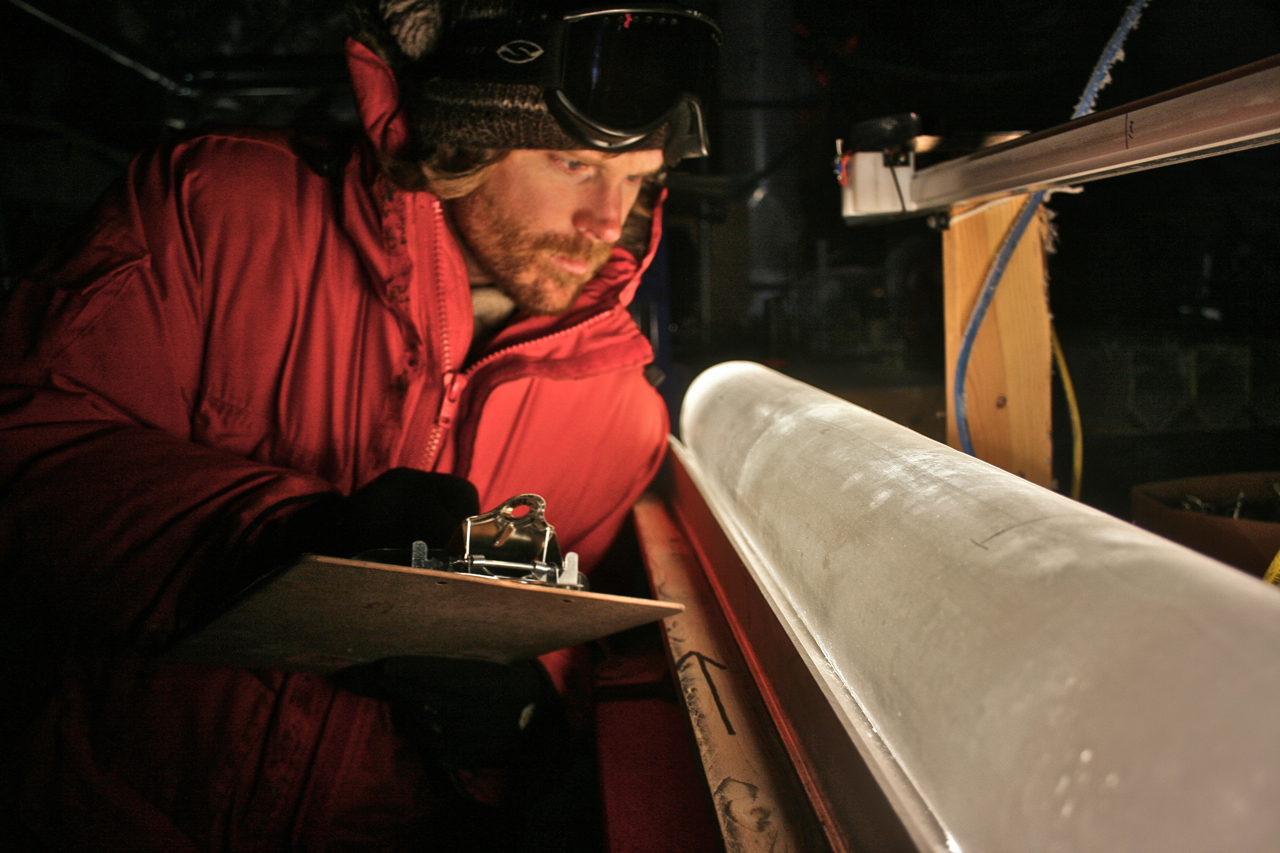Ice age is any period in Earth’s history when ice sheets cover vast regions of land. Ice ages occur during times known as glacial epochs. Earth has had numerous glacial epochs.

The earliest known ice ages occurred as long as 2.3 billion years ago. Major glacial epochs took place between about 750 million and 550 million years ago, toward the end of a time called the Proterozoic Eon. Two more glacial epochs occurred about 450 million and 300 million years ago. The most recent ice age occurred around the end of the Pleistocene Epoch. The Pleistocene Epoch was a time that lasted from 2.6 million years ago to 11,700 years ago. The term Ice Age, if capitalized, usually refers to the Pleistocene glacial epoch, when numerous separate ice ages occurred.
The time between Pleistocene ice ages is called an interglacial period. A Pleistocene ice age lasts about 90,000 years. An interglacial period usually lasts about 10,000 years. If this pattern were to continue, another ice age would begin thousands of years from now, following the current interglacial period. However, human activity is changing climate in ways that will almost certainly alter this natural pattern (see Climate change; Global warming).
The Pleistocene ice ages
About 50 million years ago, well before the start of the Pleistocene Epoch, Earth’s atmosphere began to cool. Glaciers started to form on Antarctica about 35 million years ago and continued to grow. For about 5 million years, they have covered almost all of the continent.
About 2.6 million years ago, the first large glaciers formed on North America, Europe, and Asia. This was the start of the Pleistocene Epoch. Since then, scientists believe glaciers have disappeared and formed there again as many as 30 times. The most recent ice age ended about 11,700 years ago.

Extent of the Pleistocene glaciers.
To determine the shape and size of the Pleistocene ice sheets, scientists have mainly analyzed traces left by the ice as it flowed outward under the pressure of its own weight. As the ice moved over rocks, it left scratches called striae. Valley glaciers gouged out U-shaped gorges in what were once river valleys. When glaciers melted, they left behind formations of mud, sand, silt and rocks called moraines, often in mounds and ridges. Water filled up low places once filled by the ice or scoured out by the ice, forming lakes and narrow inlets called fiords.

Scientists have also measured changes in ground level to determine the extent of the glaciers. The great pressure of the ice in the center of the sheets pushed the underlying rock down. Rock along the edges of the sheets reacted by bending upward. As the ice melted, rock under the center rose and rock along the edges sank. These adjustments are still occurring.
The most recent Pleistocene glaciers reached a thickness of about 10,000 feet (3,000 meters). At their greatest extent, they held so much of Earth’s water that sea level was about 400 feet (120 meters) lower than it is today.
The center of the main ice sheet in North America was near Hudson Bay in Canada. This sheet covered large parts of North America, reaching south to about the present locations of the Missouri and Ohio rivers.
The Scandinavian Peninsula was the center of the main sheet in Europe. This sheet reached into northern Germany and almost to Moscow. It was about half the size of the North American sheet.
The glaciers last began to retreat about 20,000 years ago. Today, only Antarctica and Greenland are almost completely covered by glaciers.
Evidence of ice ages and climates.
Each ice age consisted of many warmer and colder times of varying length and intensity. The amount of ice also varied. Evidence of the various ice ages and their climates comes from sediments (deposits of mud and other matter) on land and in the oceans, from cave deposits, and from modern glaciers and ice sheets.
Evidence from land
was the basis of the earliest descriptions of Pleistocene ice ages. This evidence included striae on rocks and some huge boulders deposited far from their place of origin. By the mid-1800’s, many scientists believed that the evidence resulted from the movement of glaciers that had covered vast areas of Europe and North America. By the late 1800’s, researchers concluded that certain moraines and other material left behind by glaciers in North America came from four ice ages. They named these ages the Nebraskan, Kansan, Illinoian, and Wisconsin.
An analysis of river terraces along the Alps led to the identification of four ice ages in Europe. The terraces consist of layers of gravel. Scientists concluded that rivers had deposited the gravel when the climate was cold. At such times, the action of frost readily breaks up rock, forming gravel. Also, there is little vegetation to hold broken rock in place. As a result, runoff from rainfall carries more gravel into rivers during these periods. Scientists named the European ice ages the Günz, Mindel, Riss, and Würm, after four rivers that had been studied. Scientists now know that the four ice ages identified in North America and in Europe are only a fraction of the 30 or so Pleistocene ice ages that occurred.
Information on ice age climate also comes from deposits of loess (fine, wind-blown dust), lake sediments, and bogs. Scientists examine such deposits for pollen and remnants of plants and animals. They then analyze their specimens according to two factors. The factors are (1) the depth at which they found the specimens, and (2) the climate in which the same species grow today.
The depths at which specimens are found indicate when the specimens were deposited. In general, deeper material was laid down earlier. The comparison with present growth patterns suggests the climatic conditions when the specimens were deposited.
Evidence from oceans
comes from cores (cylindrical samples) drilled out of sediment in the ocean floor. Researchers can, for example, count the shells of tiny ocean-dwelling animals called foraminifera at various depths in the cores. Some foraminifera grow well in warm water. Others grow well in cold water. Researchers then compare the numbers of the species at a given depth. This enables them to estimate the temperature of the water when the specimens were deposited.
Scientists determine how much ice was locked in glaciers and ice sheets by measuring the isotopes (forms) of oxygen in foraminifera shells. Two isotopes of oxygen occur most often in nature. One, known as O-18, is heavier and much less common than the other, O-16.
A water molecule consists of two atoms of hydrogen (H) and one atom of oxygen (O). Water molecules with O-16 evaporate more readily than do water molecules that have O-18. The O-16 isotope therefore accumulates in snow and ice sheets. Likewise, more O-18 collects in the ocean. Thus, during ice ages, when the sea level was low, the ocean had a higher percentage of O-18 than during interglacial periods.
The shells of foraminifera contain carbonate. Carbonate consists of one atom of carbon (C) and three atoms of oxygen (O). Foraminifera obtain the oxygen for their carbonate from ocean water. Thus, foraminifera that lived during ice ages accumulated a higher percentage of O-18 in their shells than did foraminifera that lived during interglacial periods. Measurements of the O-18 content of foraminifera shells indicate to scientists that there were roughly 30 Pleistocene ice ages.
Evidence from modern glaciers and from caves.
Some of the most detailed evidence of ice age climate comes from two sources. The first is cores of ice drilled in Greenland and Antarctica. The second is cave deposits around the world.

Scientists have drilled cores in Greenland to a depth of about 10,000 feet (3,000 meters). The cores provide a reliable record of the temperature, chemical activity, dust concentration, and gas composition of the atmosphere for the last 120,000 years. Cores drilled in Antarctica cover the last 800,000 years.
Cone-shaped deposits called stalagmites grow up from the floors of caves. They can form over thousands of years. By analyzing stalagmites, scientists can determine when the formation developed. They can also establish climate records for the time over which each stalagmite grew. Scientists have pieced together records from different stalagmites to create master climate records extending thousands of years back in time. Records from caves now cover the last 400,000 years.
Ice core, cave, and other records for the most recent ice age show large and frequent variation in the climate over much of the world. At times, the climate changed rapidly—in as little as a few decades or even a few years. These rapid changes in climate are called abrupt climate change. They may result from swift changes in ocean currents. Shifts in ocean currents would also cause changes in the atmosphere, such as shifts in wind and rain patterns. These changes in the ocean and the atmosphere would affect weather and climate worldwide.
The Proterozoic ice ages
During some of the Proterozoic glacial epochs, which came much earlier, ice sheets covered almost the entire Earth. Many animal and plant species appeared for the first time after the last of the Proterozoic ice ages. Some scientists think that such a diversity of life forms began to evolve (develop) as life adapted to the extreme conditions at the end of this eon.
